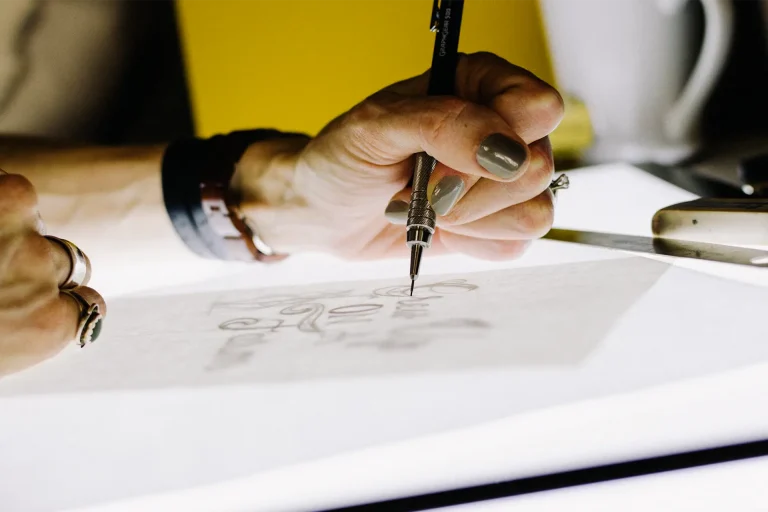The world is changing, and so is the way that we interact with each other. Despite all the new technology and advances, though, some traditional practices remain the same, and that includes business cards.
Business cards are a major staple for anyone who is open to networking or building their business. They’re still a go-to strategy at conferences or when you simply bump into someone in line at the coffee shop who is in your industry. What business card info do you need to include for your cards to be as effective as possible?
The 9 Types of Essential Business Card Info You Need
Business cards and common practices vary from industry to industry and person to person. Regardless of the business you’re in, though, you need to start with this list of what to put on a business card.
1. Business Logo
Your logo is one image that establishes your company’s brand from the first glance. Whether you’re a business owner or an employee, you want to do your part to spread the brand.
For that reason, your business logo should be one of the focal points of your business card.
2. Company Tagline
Some logos and company names make it easy to see what they offer. If you work for a restaurant called “ABC Sushi,” for instance, there isn’t much of a guessing game.
If your logo and company name is more general, though, like “ABC Services,” you want your new business contacts to be able to remember what you do. This is when a company tagline comes in handy.
If your business doesn’t have a tagline already, now is the time to write one. It can be something as simple as “The Queens of Business Consulting.” Use your tagline to not only explain your business but to add to the concrete image of your brand.
3. Common Name
It seems obvious that you need your name on a business card, but the details aren’t always so obvious.
Many people think they need to use the most formal, legal version of their name. That used to be the custom, but times are changing and freedom is spreading.
Use whatever name you use in most professional situations. If you’ve met someone and given them your business card, they know you. You don’t want the awkward conversation that happens months later when they realize they call you a different name than everyone else.
4. Job Title or Summary
This is another business card essential that everyone knows to include, but not everyone gets it right.
As with your name, you don’t have to use your exact legal job title. You can adjust the title so it clarifies your duties and position in the company.
For example, there is a growing trend of using the job title “Director of First Impressions” for reception staff. Not everyone realizes what this means, so you can write “Director of First Impressions/Receptionist” for clarity.
For entrepreneurs, this can also be the place to include a brief summary of your business if you don’t have a tag line. For instance, you can write “Business Consultant – Entertainment Industry” to specify the type of clients you serve.
5. Business Phone Number
Your business card wouldn’t be very helpful if people didn’t know how to contact you. The question is, how do you want them to contact you?
While many professionals are including their personal cell numbers on their business cards, this is not an obligation or expectation. Everyone needs to set their own limits. If you only want business contacts to get in touch at your office so you can maintain a work-life balance, you only need your office phone number.
Regardless of which number you use or how many you include, always specify the type of phone number. A simple “O” for “office” or “m” for “mobile” will suffice. You don’t want someone to text you on a landline and then get frustrated when you don’t respond.
6. Some Form of Written Contact
Let’s be honest, not everyone is a “chat on the phone” type of person. Introverts often prefer to communicate over text, email, or other mediums that don’t require them to talk. Even extroverts have times when they’re too busy for a phone call but can get out a quick text.
Instead of a landline alone, have some form of contact information that lets people contact you in writing.
7. Location
It used to be standard practice for every business card to include the company’s address. While plenty of businesses still do this, the rise of freelancing and remote teams has made this less common. After all, if you work from home, chances are that you don’t want every business contact to have your home address.
While you don’t need to include your address, it’s still helpful to include your city and state. This is a courtesy that also helps contacts remember who you are if they meet you at an out-of-town event.
8. Web Address
In this digital age when people Google everything, your company’s website is likely to be the first place people will look to find out more about you.
While some people may Google your business name, it’s courteous to include your web address on your business card. Not only does this save people the effort of searching, but it ensures that they don’t mistake your site with the site for a different company with a similar name.
9. Plenty of Open Space
You’ve probably heard artists speak about “negative space” as part of their design, and it’s true. Sometimes open, wordless space says far more than words ever could.
Keeping your business card clean instead of cramming in too much wording gives you a more modern, organized image. It also leaves room for you or your new contact to make notes about your connection or about upcoming meetings you set.
Making a Great Impression with Your Business Card
These nine bits of business card info and design elements are merely the starting points for your business card design. With these essentials in mind, you can put your creativity to work and craft a business card that makes the right first impression every time.
Why wait? Put your knowledge to work and start designing a business card online today.







